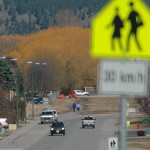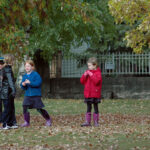Home »

Bears, hibernation and denning
 Not all bears have entered their dens. Some bears are still active, especially in milder climates. Watch for tracks in the snow or mud.
Not all bears have entered their dens. Some bears are still active, especially in milder climates. Watch for tracks in the snow or mud.
What are bear dens? Bears adapt to reduced food availability by sleeping away the winter in dens which are often located in the hollow trunks of trees or under windfalls. Bears will dig the cavity, often at a downward angle, with an entrance just big enough for them to squeeze through. They line the cavity with insulating materials.
Black bear cubs of the year will return with their female parent to overwinter together once more. In the second year, the black bear cubs will disperse and lead mostly solitary lives until they themselves are mature enough to mate.
With grizzly bears, the cubs will overwinter an additional season. This can lead to cramped quarters when the male offspring are as large, if not larger, than the female parent! Grizzly dens are often at higher elevations and may be dug straight into a hillside. Snow that covers the den helps insulate the bears and conserve energy.
When do bears hibernate?
It varies by climate and food availability but generally occurs from late October in the northern parts of the province to early December in the mildest of climates. Remember, bears hibernate as an adaptation to reduced food availability. If bears are accustomed to accessing human sources of food, they may delay hibernation.
Hibernation, torpor or denning?
There is some debate as to whether which term is the best, but the reality is that bears undergo an amazing process that is impossible for humans. They go months without eating, drinking, urinating or defecating.
They are able to recycle their waste products and do not lose bone mass. Their respiration and heart rates slow and their body temperature goes down slightly. Despite this slower metabolism, they still lose up to 30% of their body mass, mostly fat.
Because a bear does not go into deep hibernation, they can still be roused. That is why some will suggest the more appropriate term is torpor – another fascinating mechanism many animals use to conserve energy. Some animals go in and out of torpor on a daily basis.
Photo courtesy of Louise Williams
WildSafeBC Elk Valley







